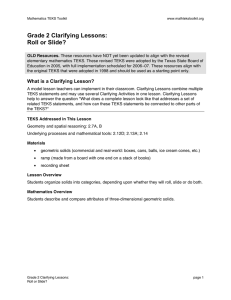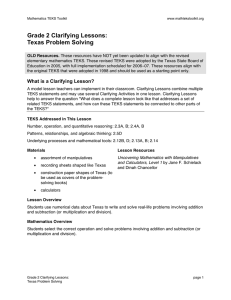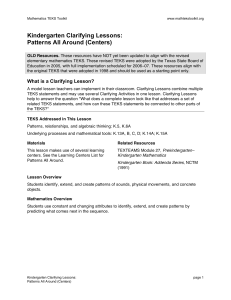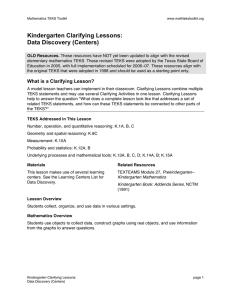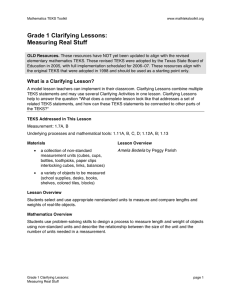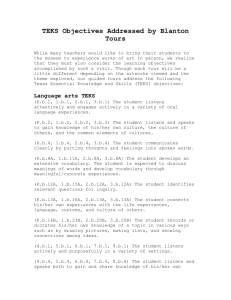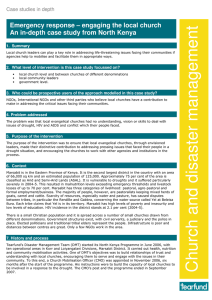Grade 2 Clarifying Lessons: Exploring Place Value
advertisement
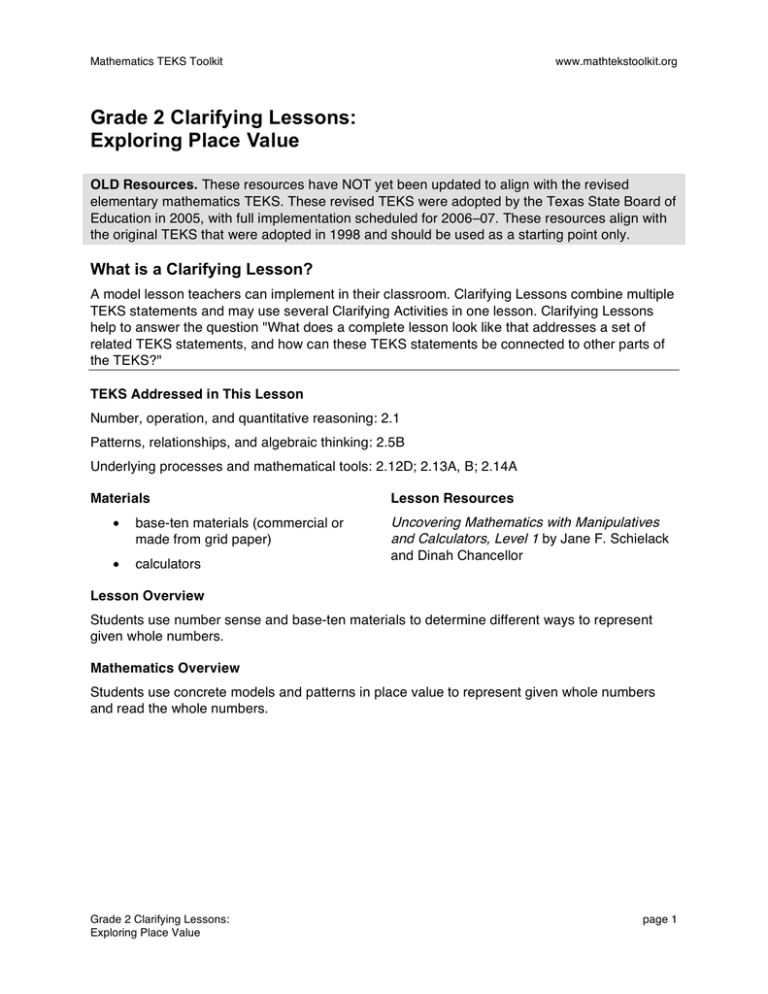
Mathematics TEKS Toolkit www.mathtekstoolkit.org Grade 2 Clarifying Lessons: Exploring Place Value OLD Resources. These resources have NOT yet been updated to align with the revised elementary mathematics TEKS. These revised TEKS were adopted by the Texas State Board of Education in 2005, with full implementation scheduled for 2006–07. These resources align with the original TEKS that were adopted in 1998 and should be used as a starting point only. What is a Clarifying Lesson? A model lesson teachers can implement in their classroom. Clarifying Lessons combine multiple TEKS statements and may use several Clarifying Activities in one lesson. Clarifying Lessons help to answer the question "What does a complete lesson look like that addresses a set of related TEKS statements, and how can these TEKS statements be connected to other parts of the TEKS?" TEKS Addressed in This Lesson Number, operation, and quantitative reasoning: 2.1 Patterns, relationships, and algebraic thinking: 2.5B Underlying processes and mathematical tools: 2.12D; 2.13A, B; 2.14A Materials • base-ten materials (commercial or made from grid paper) • calculators Lesson Resources Uncovering Mathematics with Manipulatives and Calculators, Level 1 by Jane F. Schielack and Dinah Chancellor Lesson Overview Students use number sense and base-ten materials to determine different ways to represent given whole numbers. Mathematics Overview Students use concrete models and patterns in place value to represent given whole numbers and read the whole numbers. Grade 2 Clarifying Lessons: Exploring Place Value page 1 Mathematics TEKS Toolkit www.mathtekstoolkit.org Set-up (to set the stage and motivate the students to participate) 1. Have students explore initially with base-ten materials with this question in mind: "If we are going to work with these materials, what do we need to know in order to use them to communicate with each other about numbers?" (2.1A, 2.12D) 2. Have students discuss the relationships between the different pieces. Students could even make their own sets of units, longs and flats out of centimeter- or inch-grid paper, based on their investigations of teacher-made or manufactured materials. (2.5B, 2.12D) 3. Give students a number, e.g. 27, to model with the materials. Encourage creativity and diversity, e.g. 27 units, or 1 long and 17 units, or 3 longs with 3 units placed on top of them so that 27 worth of the longs is showing. (2.1A; 2.5B; 2.12B, C) 4. Students can use the calculator to record the value of their place value materials, e.g. 10 + 10 + 1 + 1 + 1 + 1 + 1 + 1 + 1 = or + 10 = = + 1 = = = = = = = each records that 2 longs and 7 units represent 27. (2.1A, 2.12D, 2.13A) 5. Have students repeat the process with 17 and 37 to look for patterns in their representations. (2.1, 2.5B) 6. Circulate and observe each group's work to form questions for the summary discussion. (2.13A, 2.14) Teacher Notes (to personalize the lesson for your classroom) Guiding Questions (to engage students in mathematical thinking during the lesson) • What does the white cube (or square, or smallest piece) represent? The orange rod (or long)? (2.5B, 2.12D, 2.13A) • How does your representation show 27? 17? 37? (2.1, 2.13A) • Why did you choose this representation? (2.14) • Is there another way you could show 27? 17? 37? (2.1, 2.13A) • Show 27 (17, 37) with the greatest number of pieces. (2.1; 2.12B, C) • Show 27 (17, 37) with the least number of pieces. (2.1; 2.12B, C • How can you use the calculator to record the value of your pieces? (2.12D, 2.13A) • What patterns do you see in the way you represent 17, 27, and 37? (2.5B) Grade 2 Clarifying Lessons: Exploring Place Value page 2 Mathematics TEKS Toolkit www.mathtekstoolkit.org Teacher Notes (to personalize the lesson for your classroom) Summary Questions (to direct students' attention to the key mathematics in the lesson) To determine how well students understand the relationship between the concrete materials and the numbers they represent, ask questions such as: • Who thinks they showed 27 (17, 37) with the most number of pieces? Explain how yours represents 27 (17, 37). (2.1; 2.12B, C, D; 2.13A, B; 2.14) • Who thinks they showed 27 (17, 37) with the least number of pieces? Explain how yours represents 27 (17, 27). (2.1; 2.12B, C, D; 2.13A, B; 2.14) • What are some other ways you showed 27 (17, 37)? Explain how they work. (2.12B, C, D; 2.13A) • Make a class display showing all the ways used to make 17, 27, and 37. Encourage new ones with questions like: Could we use the square (or flat) to show 27? 17? 37? Could we use subtraction? (2.1; 2.12B, C, D; 2.13A) • What are the advantages of each of these representations? What are the disadvantages? (Have students discuss pros and cons of each representation.) (2.13B, 2.14) • What patterns do you see in the representations for 17, 27, and 37? (2.5B) Teacher Notes (to personalize the lesson for your classroom) Assessment Task(s) (to identify the mathematics students have learned in the lesson) • Give students grid paper, manilla paper and a new number. Have students use the grid paper to cut representations of units, longs, and flats to show many different representations of their number. Have them glue their representations on the manilla paper and write an accompanying paragraph in their journals. • Have each group brainstorm a written list of summary statements for the activity. Compile them into a class list. Grade 2 Clarifying Lessons: Exploring Place Value page 3 Mathematics TEKS Toolkit www.mathtekstoolkit.org Teacher Notes (to personalize the lesson for your classroom) Extension(s) (to lead students to connect the mathematics learned to other situations, both within and outside the classroom) Students can explore how many different ways could they could model a given number and illustrate all the ways using grid paper, manila paper, and markers. Students can explore connections between the concrete representations of the numbers and their positions on a hundreds chart. (For example, 27 has one more ten than 17, and 27 is directly under 17, or ten spaces away from 17, on the hundreds chart.) Teacher Notes (to personalize the lesson for your classroom) Grade 2 Clarifying Lessons: Exploring Place Value page 4

